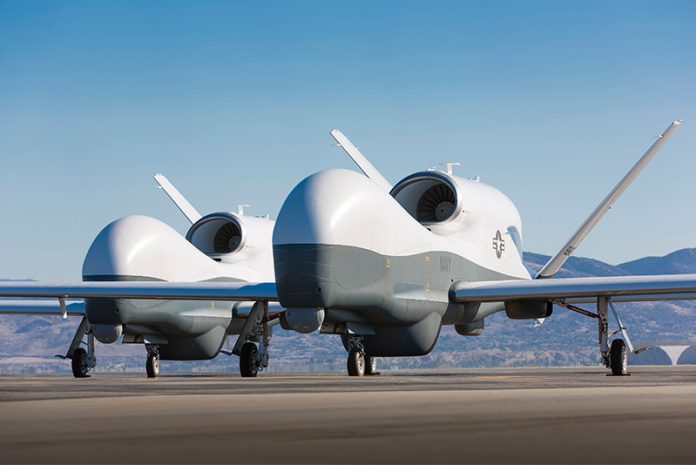The US Department of Defense (DoD) announced on 18 February 2020 that it will award Northrop Grumman with a sole-source contract to supply Australia with its second MQ-4C Triton high-altitude long-endurance unmanned aerial vehicle (HALE UAV).
The Contract
The contract award follows Canberra’s March 2019 announcement that it will purchase the second of a planned fleet of six MQ-4C UAVs for the Royal Australian Air Force (RAAF).
The first MQ-4C is expected to enter service in mid-2023, with all six scheduled to be fully operational by late 2025. They will be based at RAAF Base Edinburgh, in South Australia. The total value of the programme is expected to be about $5 billion.
MQ-4C Triton
The MQ-4C has been developed specifically for the US Navy to provide a persistent maritime intelligence, surveillance, and reconnaissance (ISR) capability. The air vehicle is derived from the Block 30 RQ-4N naval variant of the RQ-4 Global Hawk HALE UAV and is designed for high-altitude and extended duration ISR missions with a claimed range of approximately 2,000 nautical miles (3,700 kilometres) and a flight endurance of 24 hours.
The MQ-4C’s primary long-range maritime search radar is the belly mounted X-band AN/ZPY-3 Multi-Function Active Sensor (MFAS) active electronically scanned array (AESA) radar, which enables the air vehicle to cover more than 2.7 million square miles in a single sortie. Other equipment includes the Raytheon AN/DAS-3 MTS-B EO/IR sensor turret and a Sierra Nevada Corporation AN/ZLQ-1 electronics support measures suite.
Royal Australian Air Force (RAAF)
Canberra initially spent $1.04 billion to procure the first air vehicle and around $241 million to construct dedicated operational and support facilities at RAAF Base Tindal in the Northern Territory.
When operational, the RAAF’s MQ-4C UAVs will complement the service’s Boeing P-8A Poseidon multi-mission maritime patrol aircraft (MPA) and replace its ageing fleet of 19 Lockheed Martin AP-3C Orion MPAs that were introduced in the mid-1980s. The last of the Orion MPAs are expected to be phased out by 2023.
Australia has already taken delivery of seven P-8A MPAs, the first of which arrived in November 2016. Five more aircraft are expected to be delivered and operational by 2022.
by Jr Ng













